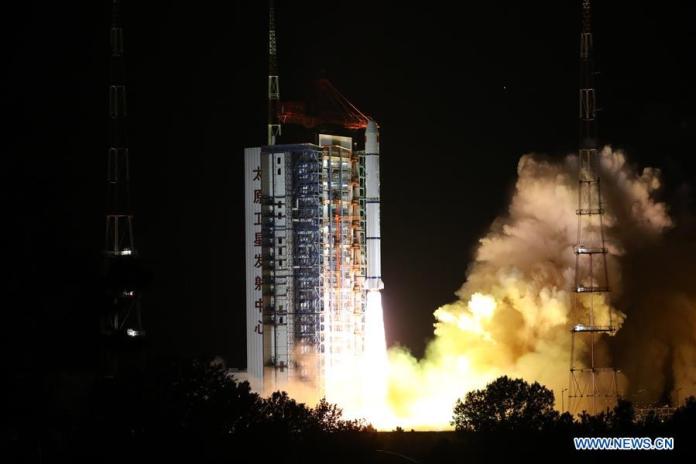
China launches monitoring satellite to ocean (Image Credit: SNN)
A Long March 2C rocket lifts with the Haiyang 1D oceanography satellite. Credit: XinhuaA oceanography satellite deployed later lifting off on a rocket Wednesday, linking a predecessor found to monitor water temperatures and ocean colour.
Chinese engineers also debuted modifications to the payload fairing of the Long March 2C to assist the construction keep its shape the newest in a series of experiments that could help lead to the recovery and reuse of future rockets.
Liftoff happened at 2:31 a.m. Thursday, Beijing time.
Powered by hydrazine-fueled motors, the two-stage launcher climbed away from Taiyuan with more than 600,000 lbs of thrust, arcing toward the south east to provide exactly the Haiyang 1D spacecraft into a polar orbit likely 98.4 degrees to the equator.
U.S. military tracking date signaled the satellite deployed to an orbit approximately 480 kilometers (775 km ) above Earth, very close to the prelaunch goal. Officials declared that the launch a success.
The China Academy of Launch Vehicle Technology, or CALT, said engineers introduced modifications into the payload fairing of the Long March 2C for this launch. CALT is currently the primary launch automobile manufacturer of China.
The shroud on Chinese rockets normally drops back into the floor uncontrolled, after jettisoning a couple of minutes after liftoff. Built with lightweight thin walls to decrease the mass, so the payload fairing may lose its shape during descent.
Officials added Earth and that the X-shaped beam together. Engineers also installed an optical fiber detector on the fairing to quantify strain, pressure and other parameters throughout the descent of the fairing back based on CALT.
The information will help inform future upgrades officials said.
Launches from many spaceports, including Taiyuan, drop booster stages and payload fairings rather than over the ocean.
The Chinese launch vehicle manufacturer didn’t say the modifications to the fairing were supposed to aid the restoration and potential reuse of payload shrouds, but the fairing alteration comes after the introduction of aerodynamic grid fins on a Long March 2C rocket launch this past year.
Then, Chinese officials said since they return to Earth, the grid hooks — resembling the fins SpaceX’s reusable Falcon 9 rocket boosters — were all also designed to help guide falling Long March phases away from populated areas.
But Chinese companies have said they are currently studying reusable rocket engineering.
The Haiyang 1D satellite comprises five instrument payloads.
The satellite will detect a measurement which helps scientists track pollution and natural ocean constituents like chlorophyll, ocean color. Haiyang 1D discover identification signs, and also will quantify picture coastal waters, sea surface temperatures. The measurements will be used by weather forecasters, farming processes, and water conservation, transport and environmental protection authorities, based on China’s government-run Xinhua news agency.
China operates two families of all Haiyang satellites — that the Haiyang 1-series and Haiyang 2-series — which take different sets of oceanography instruments. The Haiyang 1 family’s member established with a instrument bundle as Haiyang 1D in September 2018.
Haiyang the spacecraft from the Haiyang 1-series, 1D, will function in accordance with Haiyang 1C, Chinese officials said.
Comprise a radar altimeter to measure ocean topography, a microwave radiometer to map sea surface temperatures, and a scatterometer to gather wind data on the oceans.
The Haiyang satellite series is named for the Chinese term for”ocean.”
– Advertisement –








